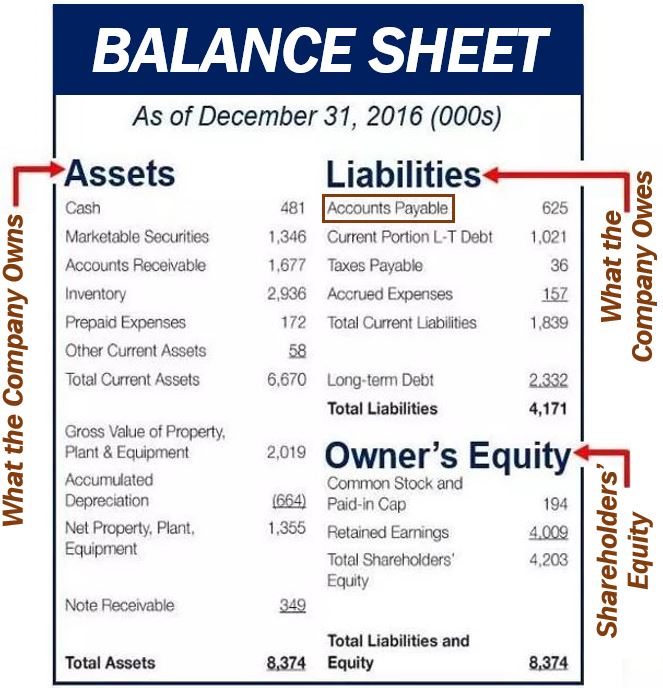What is accounts payable? Definition and examples
The term Accounts Payable or A/P refers to money that a business owes its suppliers. Accounts payable appears as a liability account in bookkeeping. It shows how much a company owes sellers or suppliers for products or services that it purchased and received on credit. On credit or means your receive the service or product now and pay later. We refer to this type of arrangement as trade credit.
Put simply; the term refers to unpaid bills.
Properly managing accounts payable not only ensures compliance with payment terms but also allows for potential benefits such as early payment discounts from suppliers.
Accounts payable only refers to short-term debts – not long-term debts. Companies have many different types of short-term debts, including payroll costs (wages or salaries), short-term loans, and income taxes.
Notes payable is not the same. Notes payable or promissory notes are debts that are created by legal instrument documents. Be careful, some people mistakenly use the two terms interchangeably.
Cambridge Dictionary defines accounts payable as “the amounts in a company’s accounts that show money that it owes, for example to suppliers (= companies that have sold them things)”.
Investors, suppliers considering credit terms, and lenders (banks) examine the relationship between accounts payable and accounts receivable to determine how well a company manages its finances.
Company department
The term may also refer to a company department that is in charge of paying invoices. In smaller businesses, that may be just one person.
For example, if a supplier calls me asking me why an invoice has not been paid, I might say: “I will call you back about this in one hour. I need to check with accounts payable to find out.” I then talk to the people or department in charge of paying invoices.
Accounts payable vs. accounts receivable
The term contrasts with accounts receivable, which has the opposite meaning.

Accounts receivable is the money that a company is owed. If your company supplies ACME Inc. with, for example, wood today, and expects to be paid in 30 days, ACME owes your company money. We place that money owed in the accounts receivable part of the balance sheet.
All owed money that will leave a company we refer to as accounts payable, while all owed money that the company will receive from clients and customers is accounts receivable.
The balance sheet
A balance sheet summarizes a company’s assets and liabilities as well as owner’s equity. The balance sheet points to a given time, which is usually the end of a year, half-year, or quarter.
Accounts payable appears under current liabilities on the balance sheet.
Items on accounts payable, i.e., invoices that need to be paid, have a date next to them. This date tells us by when payment must be made to avoid default. To default means to be unable to pay back a debt.
Strategically managing accounts payable can help a company optimize its working capital and strengthen its relationships with suppliers.
Two Videos
These two educational videos come from our sister YouTube channel – Marketing Business Network. They explain what “Accounts Payable” and “Accounts Receivable” are using straightforward language and examples:
-
What is Accounts Payable?
-
What is Accounts Receivable?

